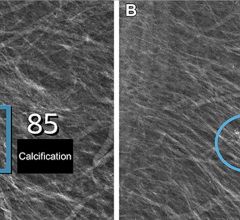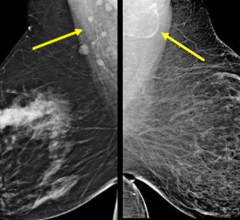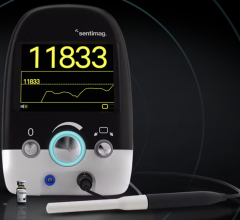
Dr. Saldanha says the MultiCare Platinum prone breast biopsy table offers exceptional image quality and targeting accuracy.
In order to better meet the increasing patient demand on their growing practice, the Women’s Imaging Center at Hillcrest Radiology recently opened the doors of their new office to serve the women of the greater New York metropolitan area. Located in Jamaica, Queens, the new center takes up one entire floor of a medical building.
“As our practice developed and expanded,” said Dr. Paul Schorr, one of the founders of Hillcrest Radiology, “we began to specialize in women’s imaging, specifically mammography.” However, it was when Hillcrest decided to make the leap into digital mammography that patient volume truly began to increase.
Digital Was the Key
Dr. Schorr and his partners purchased their first Selenia digital mammography system in 2004. “We had always had a relationship with Hologic. We had worked with their analog products for years,” Dr. Schorr said, “so we approached them first when we wanted to go digital.”
Dr. Schorr says having Selenia in house was the major reason for the increased volume in the practice. “Once the word was out that we had digital mammography, it wasn’t long before women in the community heard about us, and started coming here for their mammograms. They were walking right in and bringing us their old analog films. Then doctors began referring patients to us, and once they saw how great the images were, they would refer more and more women to us.” It soon became apparent that the practice was going to have to expand in order to meet the growing demand.
“We needed a self-contained unit with a true workable space to handle the growing number of women coming to Hillcrest,” said Dr. Pratima Saldanha, medical director for the new Women’s Imaging Center. “A dedicated women’s center was simply the way that the practice needed to grow.” The new Women’s Imaging Center has two Selenia systems, as well as a Hologic MultiCare stereotactic biopsy table and Discovery QDR DXA system. “We’re stocked to the brim with Hologic equipment,” quipped Dr. Schorr.
“Having the new center,” said Dr. Saldanha, “and the Hologic equipment, we have seen a significant breakthrough in patient throughput.” In fact, Hillcrest has experienced approximately a 30 percent increase in the number of patients they can see since the purchase of the first Selenia. ”Having the Selenias, especially the second one, has been essential for us to continue keeping up with increased demand on the department.”
Dr. Schorr says the practice is doing over 12,000 mammograms a year now. And he expects to increase these numbers by at least 10 to 15 percent over the coming year.
Improved Patient Care
While Hillcrest has been able to increase its patient throughput, this increase has not come at the expense of patient care or satisfaction. According to Dr. Saldanha, “It has improved patient throughput, and it has allowed us to see more patients, but without sacrificing quality of care.” In fact, because screenings and diagnostic procedures can be accomplished so quickly with the Hologic systems, the doctors and technologists have more time to spend with the patients.
Chief mammography technologist Suzanne DeMarco, RT (R)(M), explains that taking less time for procedures has improved the way she relates to the women who come to Hillcrest. “Rapport between the technologist and the patient is very important,” DeMarco said, “and it’s important for us to have the time to spend with the patients to develop that rapport.” Because the technologist never has to leave the room to process the films, she feels that the amount of quality time spent with the patients has actually improved. “With Selenia, I can complete a screening – four good images – in about seven to eight minutes.”
“Some of our patients are elderly and have shoulder pain,” Dr. Saldanha explained. “Because we can do these procedures so much faster now, they do not have to remain in position and compression for an inordinate amount of time.”
Dr. Saldanha notes that Selenia has much better contrast resolution than other systems. “We are truly seeing what the DMIST study reported: better visualizations of microcalcifications in younger women and premenopausal women. And we can report the same findings as they did — digital is much better than analog for certain types of women.” In addition, Dr. Saldanha says, Selenia allows them to better see other tissue anomalies such as architectural distortions in the tissue.
Working with Hologic
Dr. Schorr points out that none of the changes to the practice, including the addition of the women’s imaging center, would have been possible if the Hologic equipment had not been able to live up to its promises. “Working with Hologic has been a very positive experience,” he said. “I can honestly say, from the purchase of our first Selenia, which was two years ago, we have never had any real downtime on the system. This is significant…and incredibly important. When we went with Selenia, we traded in the two analog systems for one Selenia; it was very important that we have equipment we could rely on.”
The doctors of Hillcrest Radiology believe that digital mammography will continue to have a positive long-term impact on the practice. “Women who come to Hillcrest for digital mammograms have a very positive experience,” said Dr. Schorr. “Because of their experience, they return to us for other procedures and exams. Hologic has helped us tremendously in developing a patient for life.”



 July 29, 2024
July 29, 2024 








